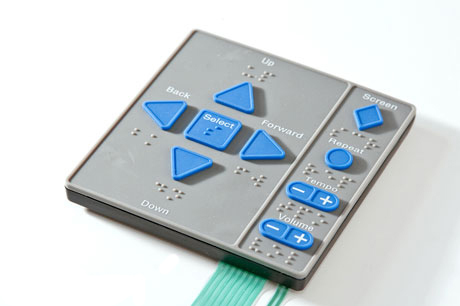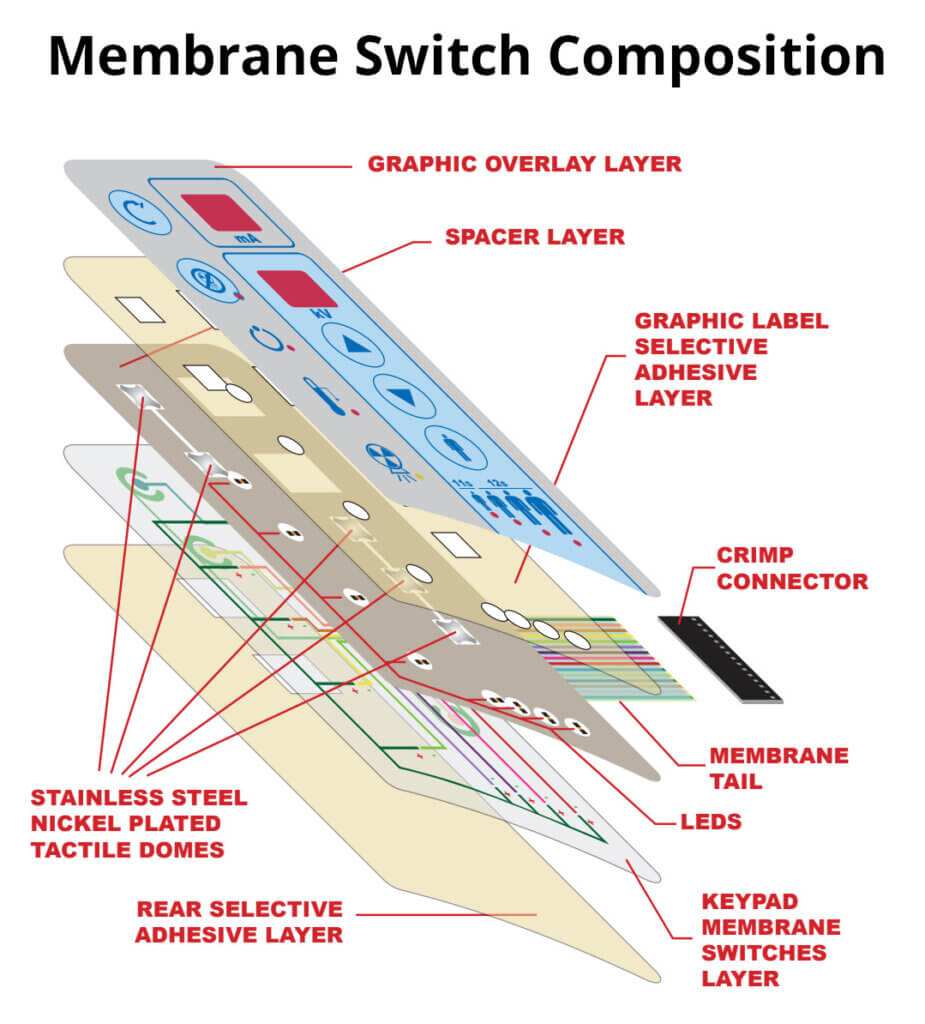Understanding Membrane Changes: The Key to Dependable and resilient Controls

What Are Membrane Switches?
Membrane layer buttons are an innovative remedy in the realm of user interface innovation, combining performance and style seamlessly. These gadgets serve as a user interface in between customers and electronic systems, integrating several elements into a small layout. Usually constructed from versatile, thin layers of materials, membrane buttons are designed to reply to touch, allowing users to communicate with machinery and electronic gadgets successfully.
The primary elements of a membrane layer button include a published circuit layer, graphic overlay, and a spacer layer that protects against unplanned activation. The graphic overlay can be tailored to reflect brand name identification or user choices, enhancing visual appeals while making sure functionality. Membrane layer switches are frequently utilized in different applications, including medical tools, customer electronics, and commercial equipment, owing to their toughness and resistance to ecological elements such as wetness and dirt.
Among the vital advantages of membrane switches is their ability to hold up against damage, making them excellent for high-traffic environments. Furthermore, they are lightweight and require minimal area, enabling for innovative styles in item advancement. Generally, membrane switches over stand for a practical and reliable option for contemporary digital interfaces, weding innovation with user-centric layout principles.
How Membrane Changes Work
The operation of membrane changes hinges on an easy yet reliable device that translates user input right into digital signals. When a customer presses the switch, the leading layer deforms, allowing a conductive aspect in the circuit layer to make call with a corresponding conductive pad on the bottom of the graphic overlay.
The style of membrane layer buttons can vary, however they frequently include domes or tactile components to offer responses to the user, enhancing the total experience - membrane switch. The products used in membrane layer buttons, such as polyester or polycarbonate, add to their durability and resistance to ecological aspects, consisting of dampness and dirt. The printed circuits are commonly encapsulated, which protects them from wear and tear over time.
Advantages of Membrane Switches

In addition, membrane layer buttons are understood for their resilience. Constructed from durable products, they are resistant to dirt, moisture, and physical wear, which considerably extends their lifespan compared to standard mechanical switches. This toughness makes them specifically suitable for high-traffic atmospheres and applications needing long life.
Another substantial advantage is the convenience of cleansing and maintenance. The smooth surface of membrane layer changes minimizes dust accumulation and is typically invulnerable to spills, making them perfect for setups that need regular sanitization.
Moreover, membrane buttons use a streamlined account, leading to a thinner design that can be integrated right into various gadgets without including mass. This function not only boosts the aesthetic charm but also adds to a much more ergonomic item style.
Applications of Membrane Buttons
Flexible and user-friendly, membrane buttons discover applications throughout a large range of sectors, consisting of medical tools, customer electronics, and industrial devices. In the clinical area, these switches are integral to devices such as diagnostic tools, client monitoring systems, and mixture pumps, where dependability and convenience of cleansing are important. Their capacity to keep and withstand rough settings capability makes them excellent for such applications.

In customer electronic devices, membrane layer find out here now switches are made use of in products like microwaves, washing devices, and push-button controls - membrane switch. Their smooth design enables user-friendly interface, boosting the overall user experience while supplying sturdiness and resistance to use and tear
Commercial devices additionally takes advantage of membrane buttons, specifically in control panels for machinery and automation systems. These buttons use protection versus dirt and dampness, making certain regular efficiency in challenging atmospheres. Additionally, their customizable features permit manufacturers to tailor them to specific operational demands, boosting effectiveness and performance.
Choosing the Right Membrane Switch
When choosing a membrane button, it is necessary to consider numerous factors that influence efficiency and viability for particular applications. The key factors to consider consist of environmental conditions, tactile responses, durability, and layout requirements.
First, evaluate the operating environment; switches subjected to dampness, chemicals, or extreme temperatures call for particular materials to ensure durability and functionality. Next off, review the need for tactile feedback. Relying on customer interaction, some applications may gain from a responsive action to validate activation, while others might prefer a non-tactile design for visual reasons.
Resilience is an additional vital aspect; membrane buttons should be created to withstand constant use, effects, and abrasion. Guarantee the chosen button can endure the expected lifecycle, particularly in high-usage situations.

Final Thought
In final thought, membrane layer switches over offer as vital elements in the layout of dependable and long lasting control systems across various markets. Their portable style, integrated with robust building and construction and personalized features, enhances individual communication while ensuring long life in requiring environments. The convenience of membrane changes permits tailored services that meet certain functional needs, strengthening their importance in modern-day innovation. As industries continue to advance, the relevance of integrating effective membrane layer switch services can not be overemphasized.
Membrane layer switches over represent a critical facet of contemporary user interface design, mixing capability with strength in numerous applications.Membrane layer buttons are an advanced service in the world of individual interface modern technology, integrating functionality and design flawlessly. Typically built from adaptable, thin layers of materials, membrane layer switches are created this to respond to touch, allowing users to engage with machinery and electronic gadgets efficiently.
The design of membrane layer switches can differ, but they typically include domes or responsive components to supply responses to the customer, enhancing the overall experience.In conclusion, membrane changes offer as important components in the design of dependable and durable control systems across different sectors.